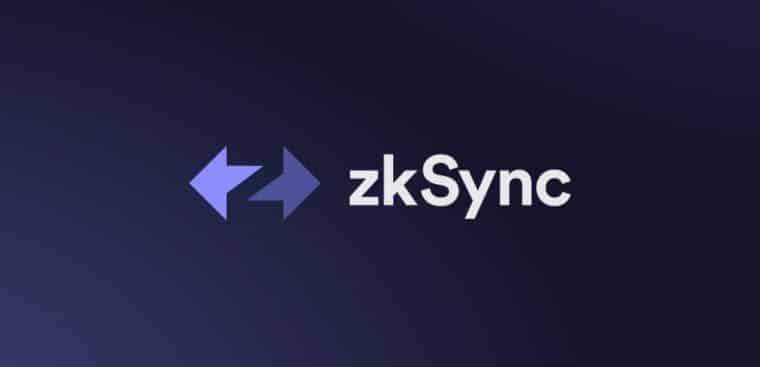
zkSync Public Alpha Mainnet: Catalyst to Transaction Throughput and Security
Created by Ethereum’s Matter Labs, zkSync has become the most technologically advanced layer-2 scaling solution for the Ethereum network.
According to an official announcement shared yesterday on zkSync’s Twitter page, crypto enthusiasts can now access its public alpha mainnet.
gm zkEVM!
zkSync Era Mainnet Alpha is now open to all users.
Developers, projects, and users can now experience the power of zkEVM.Read more: https://t.co/pL5PuZqanu
1/11 pic.twitter.com/oS6dwmXzeB
— zkSync ∎ (@zksync) March 24, 2023
This new feature is set to increase the Ethereum ecosystem functionalities and massive adoption. zkSync innovation is geared towards alleviating network congestion and improving transaction speed on the Ethereum blockchain without compromising security. This is made possible via its zero-knowledge-proof cryptographic technique.
Before the advent of zkSync, the Ethereum blockchain encountered a series of challenges in the form of high transaction costs (gas fees), which became prevalent due to the vast rise of adoptions of decentralized finance (DeFi) and non-fungible tokens (NFTs.)
In a bid to proffer solutions to these obstacles, layer 2 throughput solutions like zkSync were created to reduce transactional cost, speed, and overall efficiency.
zkSync alpha mainnet debut marks an important milestone in the growth of the Ethereum ecosystem, developers, and the crypto sphere at large.
With the alpha mainnet, transactions are batched and compressed into small pieces of data called “proof” and sent back to the Ethereum chain for quick verification.
Another core aspect of zkSync’s scaling protocol is zkEVM, another zero-knowledge of the Ethereum Virtual Machine (EVM). zkEVM embeds cryptography technology and allows complex cryptography to be easily infused with Ethereum.
zkSync’s alpha mainnet debut showcases the successful integration and compatibility with zkEVM. This seamless symbiotic compatibility allows developers to build Etheruem smart contracts from scratch on zkSync without making core changes to their codebase.
As a result, zkSync asserts to offer adoption for existing projects within the Ethereum ecosystem.
Although Matter Labs has expressed its confidence in zkSync technology and scaling transaction potentials, users should note that the alpha mainnet is designed to test the waters. The system is not expected to last two or three years from now as there is more engineering work to do.
The engineering development plans include integrating more features, scaling tools, and a myriad of services to support users and developers and, at the same time, further improve transaction speed and security.
zkSync Technology: Better Security to the Ethereum Ecosystem
Apart from offering permissionless onboarding and translation throughput, zkSync will also bring a new security era to the Ethereum ecosystem.
The most significant step to this will be delayed withdrawals. Due to zkSync layer 2 solution technology, users and developers are required to move their funds from Ethereum to zkSync through Matter Labs’ innovative proprietary bridge.
This comes into play due to funds transfer being a prevailing challenge thanks to hacks and all forms of cyber attacks. The most recent was Axie Infinity, with over $622 million worth of assets hacked in March 2022.
With the launch of zkSync, instant withdrawals will be eliminated. Users in the Ethereum ecosystem will now need to wait a day to process withdrawals, although this wait time is expected to decrease in the coming months. The development team claims that this important change will help prevent major security issues if they occur.
After its stated delayed withdrawals, the zkSync development team has partnered with reputable security auditors such as OpenZeppelin, a standard security for blockchain applications.
OpenZeppelin will monitor on-chain and off-chain activities to avoid data breaches.
The zkSync technology offers sophisticated security and has spent millions of dollars on private reviews, diverse security audits, public contests, and bug bounties platforms to make its ecosystem 100% safe.
Related News